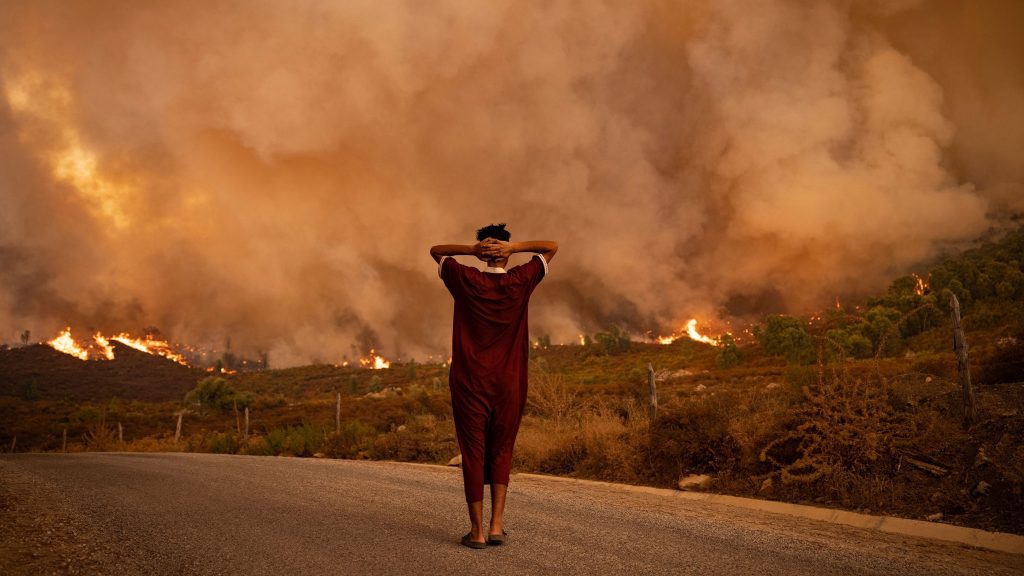
There is nothing more powerful than the forces of nature unleashed in all their fury. If we don’t limit temperature rise to 1.5 degrees C soon, we will be pulling the plug on the planet and ourselves.
Most people around the world are aware of global warming and the effects of climate change that we are facing now. We also know that it is vital to limit the planet’s warming to 1.5 degrees Celsius by 2100. But I wonder how many are aware of what it’s going to be like if we go past the 1.5 degrees Celsius-mark.
To begin with, exceeding the 1.5 degrees Celsius-mark will bring even more unpredictable weather patterns that we have faced till now.
This in turn will hit food security globally as farm production will fall due to the vagaries of the weather. Unable to bear the frequent losses, many farmers will abandon farming and turn to other work, thereby increasing pressure on the already bursting-at-the-seams metropolitan cities.
Reduced food production will also mean frequent famines, skyrocketing inflation, rising hunger and malnutrition levels and diseases for the poorer and non-food producing nations.
Plus, oceans that have been a major source of food for millions globally are in danger as they are heating up since they absorb much of the excess heat of the planet.
Increasingly, warming waters and the consequent acidification and low oxygen levels will hit marine life and disrupt the food chain there. Oceanic heat waves and dead zones are projected to become more common and severe as the global temperatures keep rising.
Coral bleaching is already a huge problem but if the world’s temperature rises, 99 per cent of the coral reefs will die off leaving coastal areas vulnerable to erosion through the repeated impact of waves. Dead coral reefs will also impact the underwater ecosystem and the livelihood of millions of people globally.
Plus, a hotter atmosphere will be a wetter atmosphere as warmer air holds more moisture. So expect much more severe and increasingly frequent storms, cyclones and hurricanes. Also, more frequent and intense rainfall will result in more frequent floods and the destruction that they bring with them.
Many places in the world lack the infrastructure to handle rainfall and floods because they are arid regions or desert zones. For instance, the UAE and Rajasthan, once deserts, are now getting more rainfall because of which they face flash floods as they don’t have the storm drains needed to handle runoff water.
Extreme heat waves also mean that glacier, Arctic and Antarctic ice will melt faster and result in rapidly rising sea levels that are expected to go up an additional one to three feet by 2100, says the latest report from the Intergovernmental Panel on Climate Change. This in turn will submerge vast areas along the coasts and destroy entire cities, their infrastructure and upend millions of lives. In the last 30 years, the number of people at risk from rising sea levels has increased from 160 million to 260 million, 90 per cent of whom live in developing nations and island states.
By limiting the Earth’s warming to 1.5 degrees C, scientists and world leaders hope to prevent even more severe climate disruptions that will compound hunger, homelessness, poverty, deaths, diseases, conflict and drought globally.
It’s not surprising then that the more vulnerable developing nations are pushing the world, particularly the developed nations, who are responsible for most greenhouse gas (GHG) emissions since the Industrial Revolution, to stick to the 1.5 degree C target.
Frighteningly, not only is the world way off track to tackle climate change and restrict it to 1.5 degrees C, it remains headed for a temperature rise of up to 2.6 degrees C, says the first comprehensive UN Global Stocktake (GST) of efforts to limit warming.
The UN report says that progress by countries that pledged to cut their greenhouse gas emissions has been marginal, and there is a vast gap between actions planned and what should have been done.
At the COP28 being held in Dubai from November 30 to December 12, nations will push for new pledges to cut emissions by switching to clean energy and reducing deforestation. For the first time, India is pledging to be carbon neutral by 2070, and more than 100 countries have joined a global pact to cut methane, a potent GHG.
But more needs to be done and fast as the Earth is already 1.1 degrees C hotter than it was 150 years ago. Though a half-degree difference in temperature increase might seem unimportant, the difference to the planet is massive.
According to UNHCR, an average 21.5 million people were displaced annually by climate change related events and extreme temperatures between 2008 and 2016. Climate migration is expected to increase exponentially in coming decades with IEP predicting that 1.2 billion people could be displaced globally by 2050 due to its effects.
Significantly, research suggests that climate change, specifically rising rainfall rates and glacial melting are also exacerbating dangers beneath the Earth’s surface by triggering earthquakes and volcanic eruptions.
This is an added danger which till now has not been attributed to global warming but has the potential to do more harm in a shorter span of time. For instance, till September 2023, globally, we saw 5,156 deaths due to flooding, 1,425 deaths due to frequent storms, 207 deaths due to extreme temperatures, 412 deaths due to landslides, 310 deaths due to wildfires but there were a whopping 54,652 fatalities due to earthquakes! And these are just reported numbers. As we all know, usually the official figures are underreported.
If we set the human tragedy aside for a minute and just focus on the economic impact of climate change, the numbers are eye-popping too. For instance, the damage from the 2011 floods in Thailand amounted to around 10 per cent of Thailand’s GDP, the 2018 wildfires in California coast 1.7 per cent of the US GDP and over the past decade, climatic disasters are estimated to add up to around $1.3 trillion or around 0.2 per cent of world GDP on average, per year!
COP28 is important because it marks the conclusion of the first GST and the scientific and activist community is hoping that governments will come up with a roadmap to accelerate climate action at Dubai. They also hope that COP28 will get the Loss and Damage Fund up and running and there will be an agreement on a framework for the Paris Agreement’s Global Goal on Adaptation.
Last but not the least, one hopes that governments will continue their negotiations on a new climate finance goal to replace the $100 billion commitment that has never been shown to have been met in the first place.
The fact is that if the world keeps on going the way it is and keeps destroying the environment in the name of development and economic progress, there will be no economic progress in the years to come because we will just be ensuring our own destruction. There is nothing more powerful than the forces of nature unleashed in all their fury. If we don’t limit the temperature rise to 1.5 degrees C, we will be pulling the plug on the planet and ourselves.













